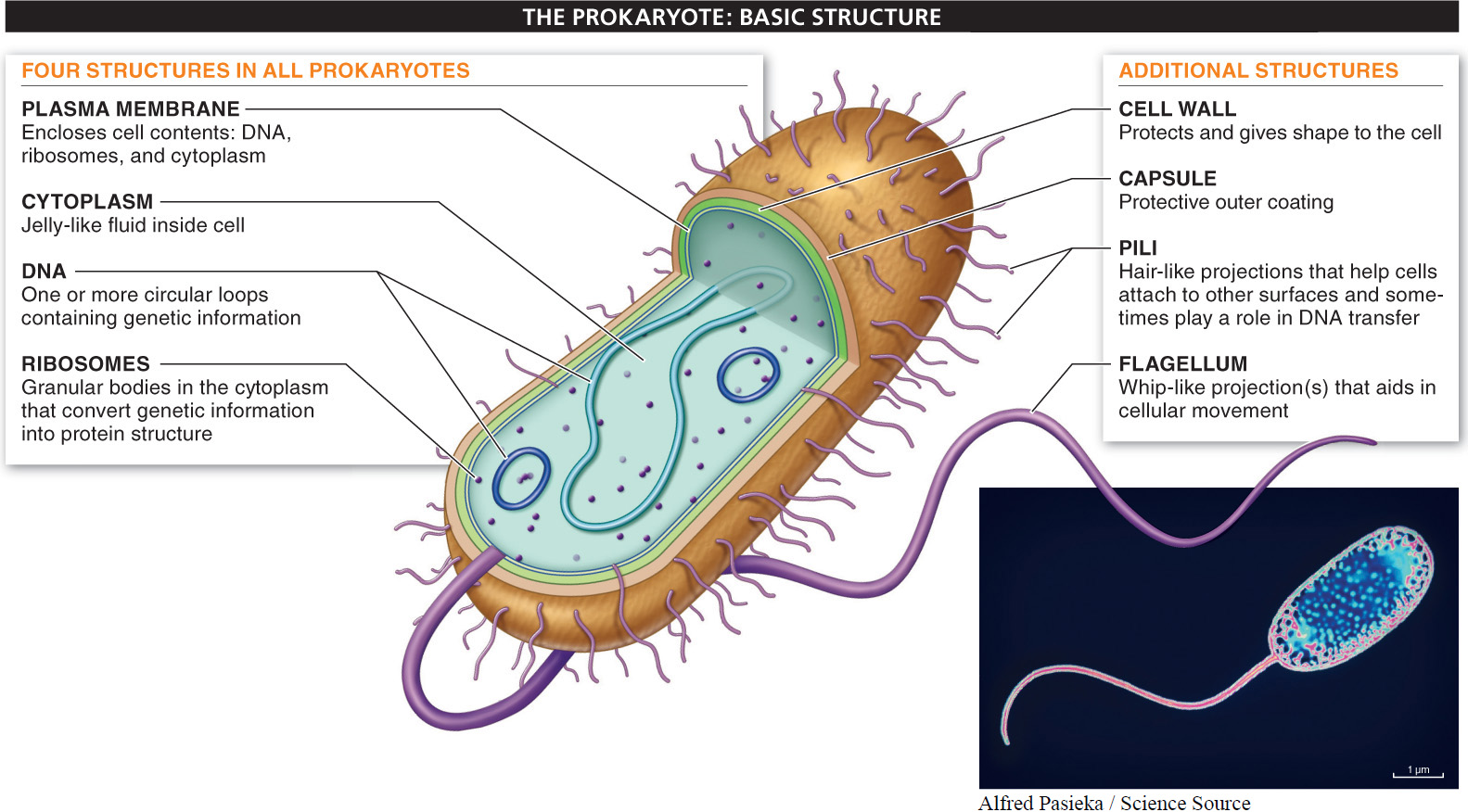Although millions of diverse species live on earth and many of those organisms contain trillions of different cells, every cell falls into one of two basic categories.
A eukaryotic cell has a central control structure called a nucleus, which contains the cell’s DNA. Organisms composed of eukaryotic cells are called eukaryotes. (The term “eukaryote” comes from the Greek words for “good” and “kernel,” referring to the nucleus.)
A prokaryotic cell does not have a nucleus; its DNA simply resides in the cytoplasm. An organism consisting of a prokaryotic cell is called a prokaryote.
The first cells on earth were prokaryotes, making their appearance about 3.5 billion years ago (the term “prokaryote” comes from the Greek for “before” and “kernel,” referring to the evolutionary origin of these cells before the eukaryotes). For a long time (1.5 billion years), the prokaryotes had the planet to themselves. All prokaryotes are one-
Just two groups of prokaryotes exist: bacteria and archaea. All other organisms are eukaryotes. The largest group of prokaryotes is the bacteria. Bacteria are involved in many critical biological processes and affect human health in important ways. Those such as Escherichia coli (E. coli) live in your intestine and help your body make some essential vitamins. But some other strains of E. coli as well as some other bacteria species are responsible for illness. Streptococcus pyogenes, for example, causes strep throat. Less familiar to you may be the archaea; these microorganisms inhabit some of the harshest environments on earth, thriving in extremes of temperature, salinity, and pH.
Prokaryotes have four basic structural features (FIGURE 3-4).

- 1. A plasma membrane encompasses the cell (and sometimes is simply called the “cell membrane”). Anything inside the plasma membrane is referred to as “intracellular,” and everything outside the plasma membrane is “extracellular.”
- 2. The cytoplasm refers to the cell’s contents contained within the plasma membrane. This includes the jelly-
like fluid, called the cytosol, and the cell’s genome. - 3. Ribosomes are little granular bodies where proteins are made; thousands of them are scattered throughout the cytoplasm.
- 4. Each prokaryote has one or more circular loops or linear strands of DNA.
90
Some prokaryotes have additional structures. For example, many have a rigid cell wall that protects and gives shape to the cell. Some have a sticky, sugary capsule as their outermost layer. This sticky outer coat provides protection and enhances the prokaryotes’ ability to anchor themselves in place when necessary.
Many prokaryotes have a flagellum (pl. flagella), a long, thin, whip-
Although prokaryotes are smaller, evolutionarily older, and structurally more simple than eukaryotes, they are fantastically diverse metabolically (i.e., in the way they break down and build up molecules). Among many other energy-
TAKE-HOME MESSAGE 3.2
Every cell on earth is either a eukaryotic or a prokaryotic cell. Prokaryotes, which have no nucleus, were the first cells on earth. They are single-
How is the location of the DNA in a prokaryotic cell different from that of a eukaryotic cell?
In a eukaryotic cell, DNA is contained within an internal structure called a nucleus. Prokaryotic cells do not have a nucleus, and their DNA simply is located in the cytoplasm.